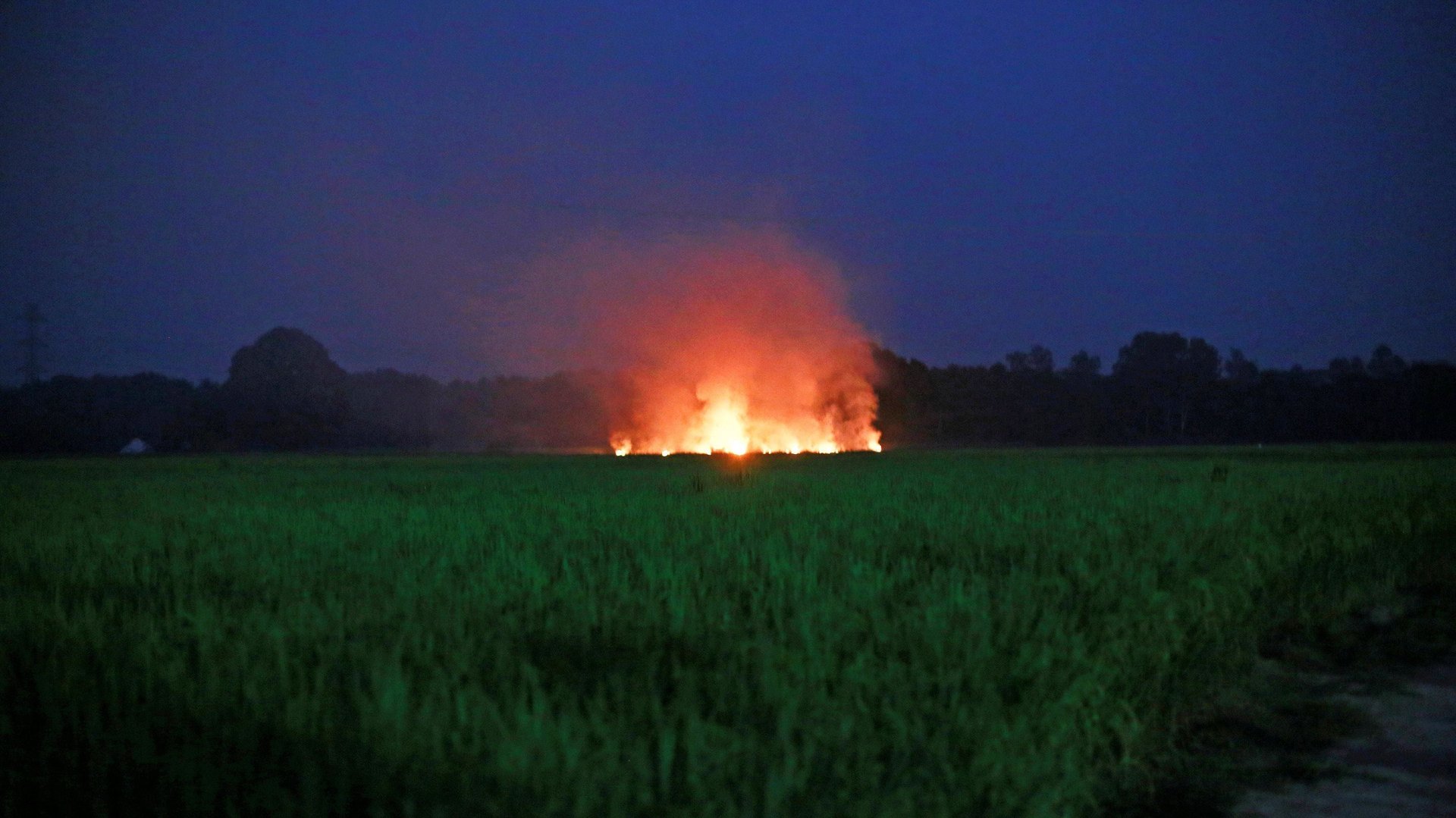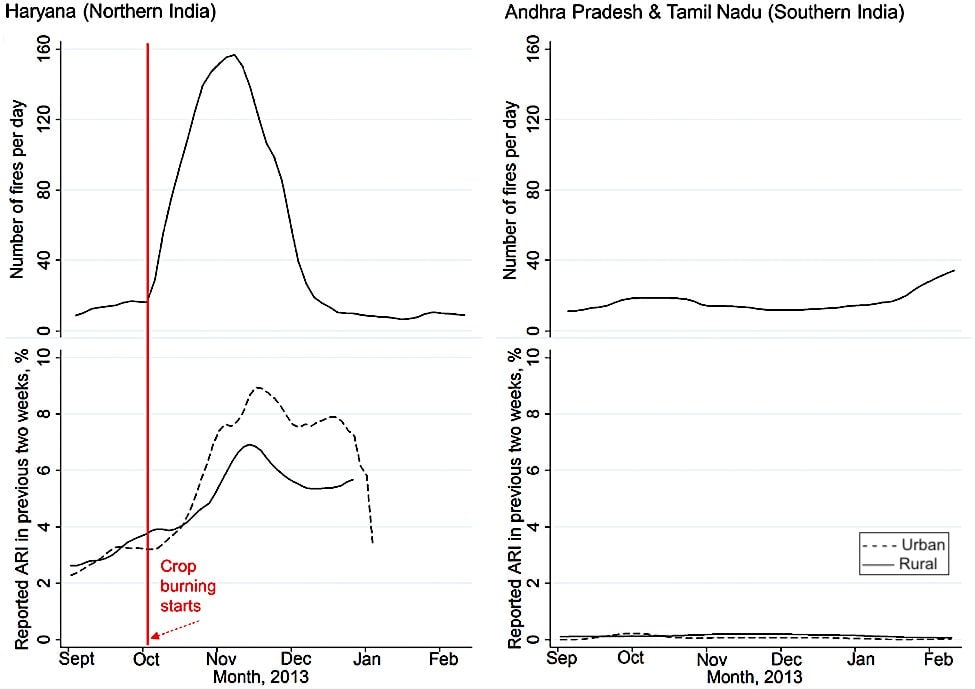India may lose $190 billion over five years to crop burning and firecrackers
Winters are dreaded in northern India, thanks to the toxic smog created every year by smoke from crop-stubble burning, fire crackers, and industrial and vehicular emissions. New research now puts some startling numbers to this lethal phenomenon.


Winters are dreaded in northern India, thanks to the toxic smog created every year by smoke from crop-stubble burning, fire crackers, and industrial and vehicular emissions. New research now puts some startling numbers to this lethal phenomenon.
The combined effect of farmers setting ablaze crop residue and the festive crackers set off during the Hindu festival of Diwali can cost the economy up to $190 billion (Rs13 lakh crore), or 1.7% of India’s GDP, over the next five years, according to a study published recently in the International Journal of Epidemiology. The study was authored by researchers at the University of Washington, Oklahoma State University, and the International Food Policy Research Institute (IFPRI).
This loss comes from the human cost: Residents of India’s capital, New Delhi, and the neighbouring states of Punjab and Haryana collectively lose 19.2 million healthy man years due to the burning of crop residue and firecrackers.
The researchers looked at responses of over 250,000 residents from the Indian government’s district-level household survey that was conducted over 2013 and 2014, and found a correlation between a peak in respiratory illnesses and NASA’s satellite imagery of farm fires in the country.
Though India’s national green tribunal has banned stubble burning, it remains prevalent due to a lack of enforcement and alternatives for farmers. Similarly, India’s supreme court restricted the use of firecrackers in New Delhi last year, but with little success.
Safe south
In India’s southern states of Tamil Nadu and Andhra Pradesh, stubble burning is not practised and firecracker bursting during Diwali is much less prevalent. Consequently, acute respiratory infections here around the stubble burning season in 2013 were far fewer than in Haryana, the study found.

ARI: acute respiratory infections
The days after Diwali, which fell on Nov. 03 that year, coincided with peak respiratory ailments. In fact, the study shows that even after discounting the effects of crop burning, setting off firecrackers during the festival more than doubled the risk of illness.
About 21% of all acute respiratory infections in New Delhi, Punjab, and Haryana can be attributed to stubble burning and bursting of firecrackers.
Who pays the most?
The study says some sections of the population are more vulnerable than others. Children below five years of age and the elderly are at a greater risk of respiratory infections.
Stubble burning also tends to hurt men slightly more than women. “The difference between (its impact on) men and women was very small,” said Samuel Scott, a research fellow at IFPRI and one of the study’s authors. “However, one could speculate that men have greater exposure to the harmful effects of crop burning as they are typically the ones burning the fields themselves. Thus, they would be exposed to the highest levels of smoke at the source before it has a chance to disperse.”
People living in cities are also more affected than village residents. Stubble burning is the main cause of acute respiratory infections in New Delhi and urban Punjab and Haryana, the second biggest reason being the burning of firecrackers. These practices have a worse impact than even vehicular pollution and open drainages, the study found.